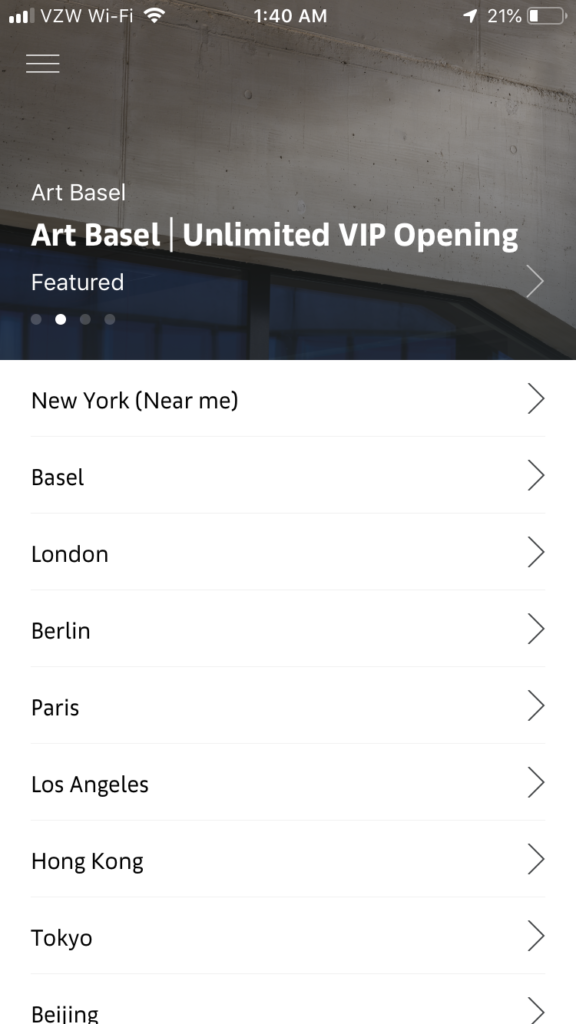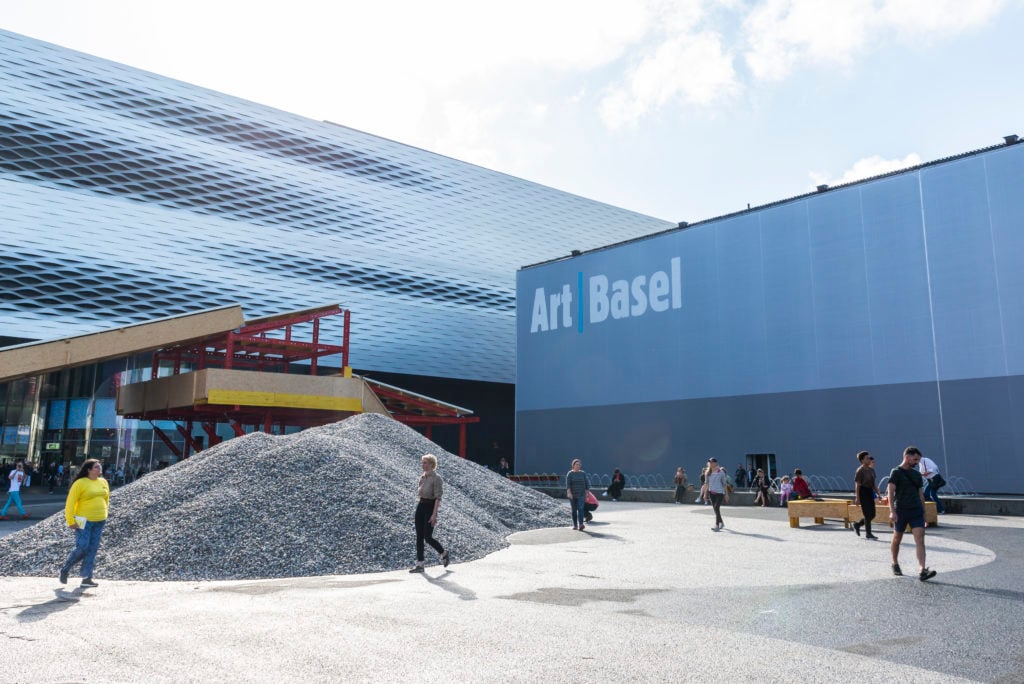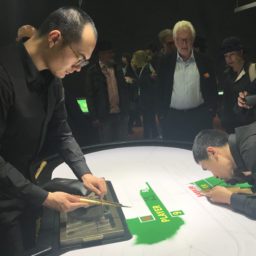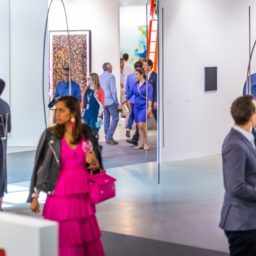For years, dealers have complained that fewer and fewer people are visiting galleries, opting instead for the one-stop-shop provided by art fairs. Now, one of those art fairs is working to encourage people to get back into the white cube.
Art Basel announced today that it will launch the Art Basel Global Guide, a new suite of services inside its app that offer users information on gallery programming and specific art-world travel recommendations in 130 cities worldwide.
“We’ve talked for a long time about the necessity of working to make our galleries successful not just in the three weeks per year they’re in our halls [if they do all three fairs] but rather on a yearlong basis,” Art Basel global director Marc Spiegler told artnet News. For Art Basel, this digital initiative is a way to drive collectors to its constituents around the world during the “fallow periods” between fairs and other major market events.
The heart of the Global Guide is an enhanced directory of galleries that have participated in any of the three annual Art Basel fairs. Organized by city, the listings provide an overview and location information for more than 500 galleries, along with descriptions of works on view in each gallery’s past or forthcoming Art Basel booths. An entry exists for every city that one of the fair’s exhibitors calls home, ranging from traditional hubs like New York and London to less traveled destinations like Chengdu, Tunis, and Karachi.
Although a beta version of the Global Guide’s directory has been live since October 2018 (meaning users can access it now), new features will be launched in coming months. Later this summer, galleries will be able to post specific events, such as performances or opening receptions, and this fall, prominent figures in the art trade will provide city-specific recommendations on exhibitions, museums, restaurants, bars, and hotels.

Partial view of the Art Basel Global Guide’s gallery directory for New York. Courtesy of Art Basel.
Spiegler feels that it is only natural to address the IRL problem of foot traffic with a digital solution, particularly one tailored to the smartphone. “If you’re trying to promote galleries with whom you work in your own physical space to patrons on the move all over the world, the only place it makes sense to promote them is in their phones,” he said.
Art Basel’s Global Guide enters an app space already populated by longer-tenured competitors. For example, See Saw, Artsy, and Curate LA all offer city-specific, mappable gallery directories. But whereas the other apps aim to be comprehensive, the Global Guide opts for exclusivity. Only galleries granted entry to at least one of Art Basel’s fairs will appear in its directory, giving the app what Spiegler calls “a highly selective vision.” By promoting only pre-approved exhibitors, the Global Guide effectively translates the offline prestige of showing at Art Basel into the online sphere.

The Art Basel Global Guide’s gallery map. Courtesy of Art Basel.
The app’s upcoming slate of expert recommendations is similarly targeted in scope. Spiegler pushed back against the idea that this feature could position Art Basel as more of a lifestyle brand than an art-fair brand. He reinforced that the Global Guide will only weigh in on what he deemed the four “travel essentials” of the art world: what to see in galleries, what to see in institutions, where to stay, and where to eat and drink. “We’re not telling people where to buy high heels or sneakers, or which is the most romantic bridge in Venice,” he said. “That’s someone else’s job.”

Screenshot of the Art Basel Global Guide’s beta version.
Art Basel designed the Global Guide to synergize with its app’s existing functionalities, which include thousands of photos of works displayed on the stands of exhibitors past and present. This is perhaps most valuable when a user taps one of the app’s many heart icons to “favorite” particular works, artists, or galleries.
Favorite, say, a work by Hito Steyerl while browsing through the in-app content for this June’s Art Basel in Switzerland, and your interest in her work will automatically be ported over to the Global Guide. Open it in a city showing Steyerl’s work later on, and the Global Guide will highlight where you can see her exhibition, regardless of whether the venue is a nonprofit or commercial space (as long as the latter has participated in a Basel fair, of course).
One caveat is that the Global Guide has no built-in metrics to indicate whether or not it is accomplishing its goal of driving foot traffic to Art Basel galleries. (The only way to definitively answer this question would be to track users’ movements to a degree that would only feel appropriate to the National Security Agency or a jealous ex.) Spiegler suggested that Art Basel was willing to sacrifice this degree of certainty for the sake of privacy.
Still, more measurable options could emerge in the future. Although Spiegler wouldn’t be drawn out with the question, one crucial element of the Art Basel app is its knowledge of the user’s status within the fair’s ecosystem. VIPs, for instance, can input the details from their VIP cards, enabling the app to push them notifications about specific events at Art Basel’s fairs that only they can access. It stands to reason that galleries could eventually use the Global Guide to invite particular tiers of collectors to particular events—a level of targeting that would add even more value to the app.
It remains to be seen what the Art Basel Global Guide’s full set of capabilities will be. But as Spiegler put it, “We’re only as strong as our galleries. The more we can do to keep our galleries strong all year, the better off we’ll be.”
The Art Basel app is available at no cost for iOS and Android smartphones through Apple’s App Store and Google Play.












